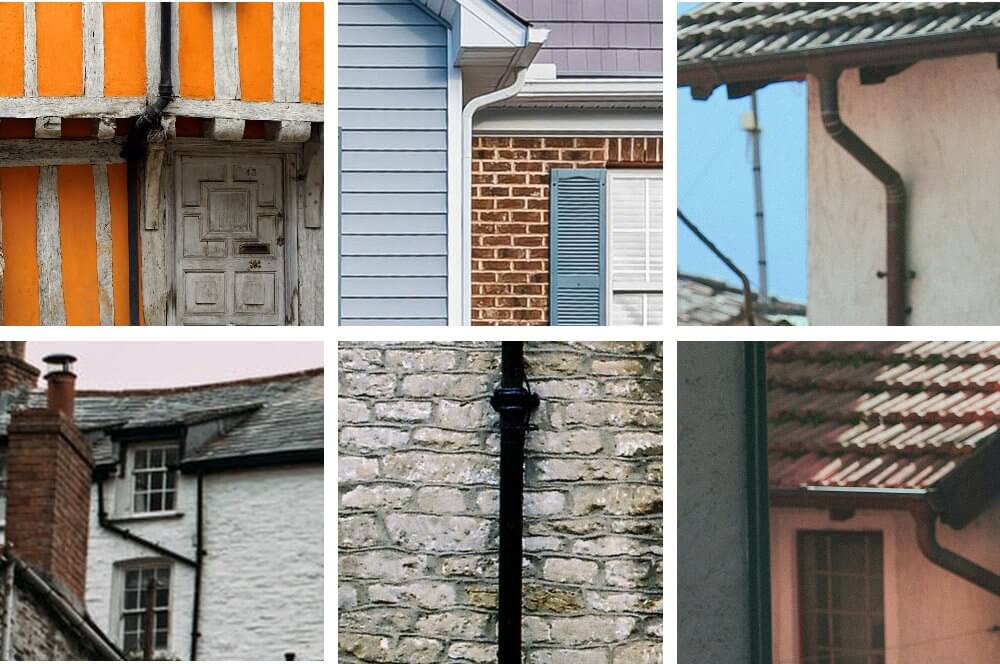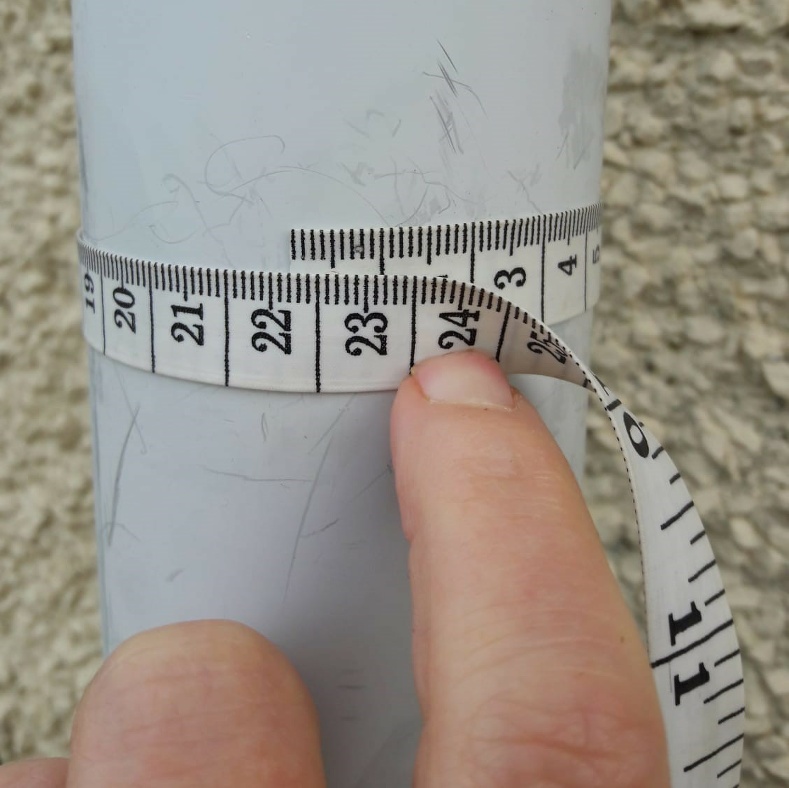If you haven’t yet delved in the world of downpipes and guttering in the UK you might be amazed to find out that it is quite a complex world of different materials and sizes. To cut a long story short, there is no standard size. We started to make a list of downpipe sizes from different manufacturers and it quickly grew into a very big list indeed!

hen it comes to knowing what size your downpipe is for fitting a downpipe filter or waterbutt connector there are a few things you need to know.
UK Downpipe FAQs
What is my downpipe made of?
Downpipes in the UK for homes are made of either PVC, cast-iron, or other metals like stainless steel, zinc or copper. PVC is most often found on houses that were built after the mid 1930s. Cast Iron and lead downpipes are generally found on older buildings (unless the guttering has been updated). Downpipes made of other metals like stainless steel, zinc, copper or lead are less often found in UK domestic architecture but are nonetheless still used and becoming more and more popular.
When it comes to fitting a downpipe diverter knowing what material your downpipe is made of is important particularly for PVC and cast-iron downpipes.
Cast-Iron downpipes tend to be very thick walled and overtime the effective thickness of the pipe wall increases due to rust build up on the inside.
What size is a standard downpipe?
Unfortunately, there is no one typical standard size of downpipe for UK homes.
Downpipes for homes in the UK are either round or square. They range in size from 65mm square to 120mm round. Usually, downpipe manufacturers refer to the Outer Diameter (OD) of guttering products when they talk about sizes (but not always).
When a downpipe is square, the “rounding” on the corners varies between manufacturers along with the “squareness” of the square sides.
The thickness of the material used to make the downpipe also varies slightly, this is true for all types of materials including PVC and metals.
The difference between the Outer Diameter (OD) and Inner Diameter (ID) of the downpipe is important to know when fitting a downpipe diverter as most downpipe diverters are designed so that the downpipe goes inside of the diverter at the top of the diverter and for the diverter to go inside of the downpipe at the bottom of the diverter. This ensures there are no water leaks and also that no seals or sealants are required.
However, when you have a downpipe that is attached to your wall, it can be difficult to measure.
Here are some useful tips for measuring downpipe dimensions:
For round downpipes …
How to measure downpipe diameter with tape measure

If you have a flexible tape measure like a dressmakers tape, tailors tape or fitness tape (for measuring your waist etc) then it is easy to work out the Outer Diameter (OD) of a downpipe.
1.With your flexible tape measure, measure all the way around the outside of the downpipe horizontally to get the circumference of the pipe.
2.Then divide that measurement by 3.14 (π pi) to get the outer diameter of the pipe.
Example: The picture on the right shows this downpipe with a circumference of about 217mm. 217 divided by 3.14 = 69mm. So this downpipe has an outer diameter (OD) of about 69mm.
How to measure pipe diameter with string
If you do not have a flexible tape measure, you can use a piece of string to work out the Outer Dimension (OD) size of the downpipe.
1.Hold one end of the string at the front of the downpipe and put the string all around horizontally until it meets the end at the front.
2.Mark the string where it meets the end of the string.
3.Lay the string out flat onto a ruler or metal tape measure, with the end at 0 measure read off the value at the point that you marked the string. That is the circumference of the pipe.
4.Then divide that measurement by 3.14 (π pi) to get the outer diameter of the pipe.
For square downpipes …
Square downpipes are easily measured with a ruler or tape measure, simple measure across one side of the square to get the length of one side. Remember to look for any rounding of the corners and measure to and from the furthest points on either side.
How to measure the Inner Dimension of a downpipe
If you don’t have a piece of spare piece of downpipe available to measure across the diameter (or square) or cannot reach an end of the downpipe to measure it. Along with the instructions above for measuring the outside diameter of a downpipe, here are some generalisations that can help:
- Most UK PVC downpipes are about 2mm thick (give or take half a millimetre).
- Walls of Cast Iron downpipes vary between about 9mm and 12.7mm thick plus the extra thickness of inner rust over time.
- Other metal downpipes will be about 2mm thick (give or take half a millimetre). If newly fitted you may be able to find out the precise thickness from the manufacturer or builder.
What downpipe diverter do I need?
The good news is that the 3P Technik downpipe diverters, leaf and moss filters that we feature on this site fit all:
- Round PVC downpipes from 68mm to 110mm (Outer Diameter)
- Square PVC downpipes from 65mm to 75mm (Outer Width)
Note for the max outer diameters the Diverters and Leaf Filters are used without the UK adaptors and the Filter Collector is used without the top and bottom collars (see individual products for further details).
Unfortunately, the downpipe filters, leaf catcher and leaf separators featured on this site do not fit cast-iron downpipes. They should however, fit other metal downpipes where the OD dimensions are comfortably within the min and max dimensions above.
If you have any questions about removing moss or leaves from the rainwater that flows down your downpipe, or using rainwater in a rainwater harvester or water butt please do not hesitate to contact our helpful team.

